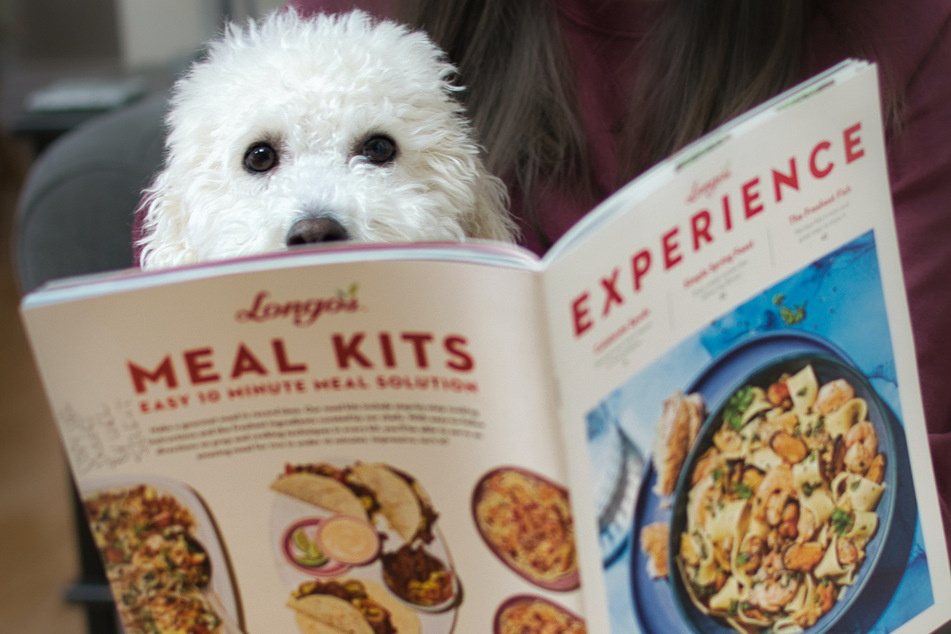How many words can a dog learn and how to expand a dog's vocabulary
When it's time to start playing doggy brain games, words are commonly used. How many words can a dog learn, and how can you help improve a dog's vocabulary?

No matter the training you give your dog, it will eventually start to recognize a number of different words. It's name, of course, is the obvious example, but other words like "food", "no", and "stop" will often enter their vocabulary without much training at all. However, this is barely the base of a dog's linguistic abilities!
In this dog guide, TAG24 will dive into how many words a dog can learn, what are some of the best words to teach them, and how to improve a dog's vocabulary. Let's take a look...
How many words can a dog learn?
Our four-legged friends are some of the smartest animals in the world, with the American Psychological Association claiming that the average dog can learn about 165 words, while some "super dogs" are capable of learning 250. Indeed, this is not an impressive number for a human, but it is incredibly impressive for an animal!
On top of being extraordinary in itself, a dog's ability to learn words is also incredibly useful. Utilizing this ability allows you to teach commands, training them from a young age to be obedient, and exercising their brain throughout the length of their life.
Can dogs recognize objects, and how?
Dogs orient themselves primarily by the size and shape of an object, rather than the color (an important note is that dogs do not see colors similarly as humans do), but can still be taught the words associated with a certain object. How does this work, though?
Once a dog has learned a particular word, they will associate it with whatever object has been prominent during the exercise you have been undertaking. If you are throwing a ball and you keep saying "ball" whenever you pick it up, then it may recognize that you are talking about the particular spherical object in question.

How to improve a dog's vocabulary
If you are looking to improve your dog's vocabulary and teach it new words, the process can be a little difficult. They don't work or learn like we do, so the way you teach them is entirely through association.
Here's how to improve your dog's vocabulary:
Step 1: Decide on a particular object and its name, and have your dog sit a few steps in front of it. Place a treat next to the object and go back to your dog.
Step 2: Release your dog from the "sit" command and allow it to search for the treat, walking with him throughout the process. Repeat this step a couple of times.
Step 3: Once your dog understands that when it goes to the item it will find the treat, take it away. Continue the procedure but without actually placing a treat on the ground. It won't find a treat there, but once it has gone to this item you should then reward it.
Remember to vary between steps two and three: On occasion, give your dog a treat. Other than that, though, shower them with love and affection instead. You don't want to overfeed them.
Step 4: If things are going well, start saying the name of the item repeatedly whenever it goes to it. Make sure that if your doggo makes any contact with it, you say the item's name clearly.
Step 5: Once you are sure that the dog associates the word with the object, change locations, place the object somewhere, and say the word. If your dog goes to the item, then you have taught it a new word.
Important: It's incredibly important to challenge your darling doggo, but it's also important to give them plenty of breaks and not overwork it.
What are the most important dog training commands?

Items are not the only words that you can teach your dog. Commands are far more important, as they can be used to keep your dog safe and healthy through the likes of agility training and puzzle solving, In other words, it's about obedience.
You want to know that when you tell your pup to stop before crossing the road that it will listen and avoid danger, like being hit by a car. Another example may be that it stops humping when you don't want it to hump, or doesn't get overly friendly with another doggo.
As a result, here are a number of extremely important words that need to be trained into your dog's vocabulary:
- Your dog's name
- No
- Stop
- Come
- Sit
- Down
- Stay
- Wait
- Heel
- Watch
- Drop
- Take
- Bed
- Quiet
A lot of these commands are important to keep your dog safe, and others are useful to simply keep your life as a dog owner easier.
Dogs can learn words, but in a different way to humans
A dog's ability to associate words with objects and items can be pretty impressive, especially when compared to cats. It's important to recognize this intelligence but also understand that this doesn't mean that they are equals when compared to the brain functions of a human.
Perfect pooches like your darling doggo can only hold a certain amount in their brain, so you shouldn't stretch them out with excessive learning. Teach them a few words, expand their vocabulary, and then have some fun with them!
Cover photo: Unsplash/Jamie Street




